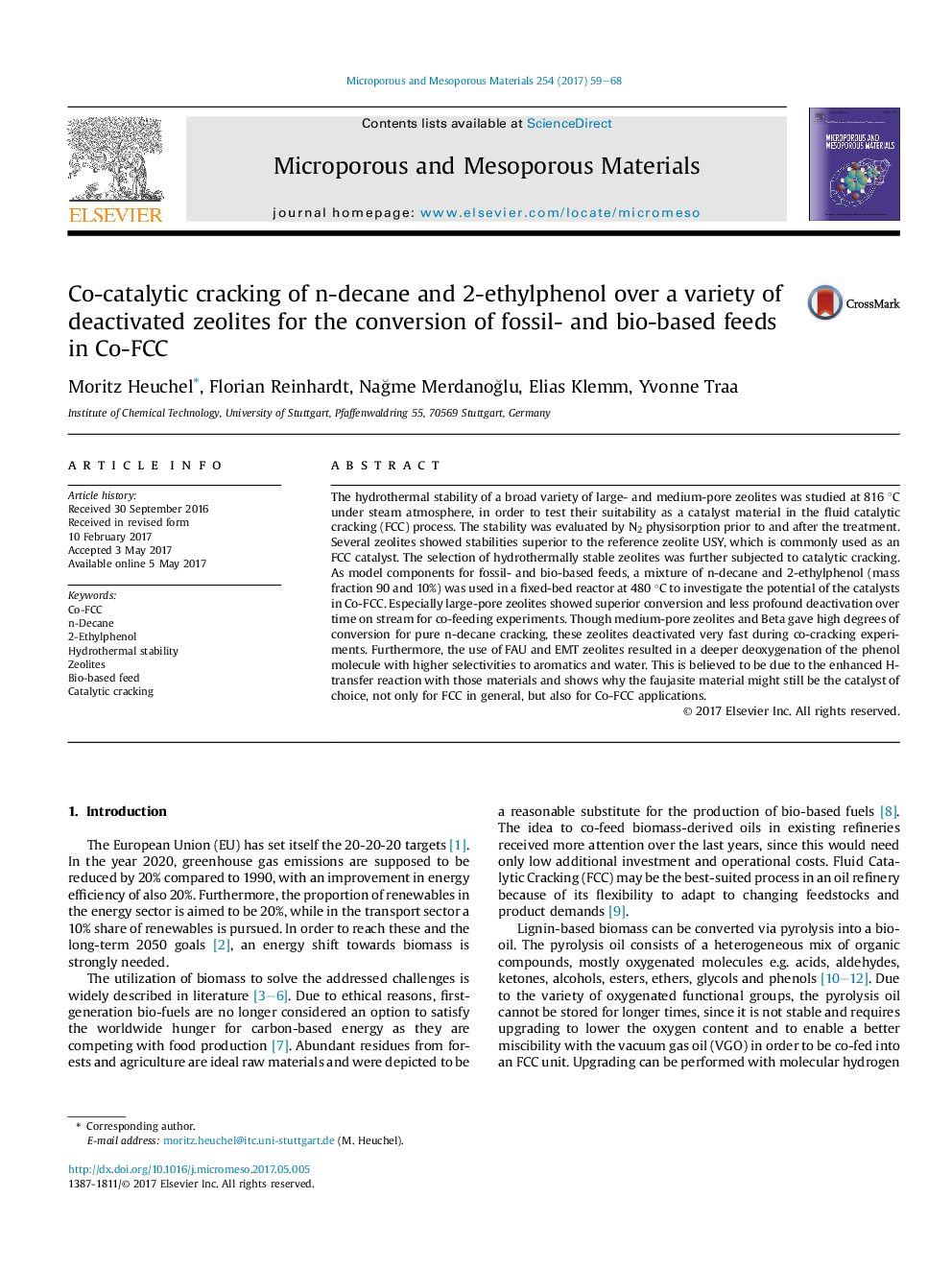| کد مقاله | کد نشریه | سال انتشار | مقاله انگلیسی | نسخه تمام متن |
|---|---|---|---|---|
| 6456542 | 1420405 | 2017 | 10 صفحه PDF | دانلود رایگان |

- Hydrothermal stability of a large variety of zeolites was studied.
- Activity in n-decane cracking and co-cracking with 2-ethylphenol was investigated.
- Good deoxygenation of phenol can be obtained via the H-transfer reaction step.
- Preferred catalysts are large-pore zeolites with FAU/EMT structure.
The hydrothermal stability of a broad variety of large- and medium-pore zeolites was studied at 816 °C under steam atmosphere, in order to test their suitability as a catalyst material in the fluid catalytic cracking (FCC) process. The stability was evaluated by N2 physisorption prior to and after the treatment. Several zeolites showed stabilities superior to the reference zeolite USY, which is commonly used as an FCC catalyst. The selection of hydrothermally stable zeolites was further subjected to catalytic cracking. As model components for fossil- and bio-based feeds, a mixture of n-decane and 2-ethylphenol (mass fraction 90 and 10%) was used in a fixed-bed reactor at 480 °C to investigate the potential of the catalysts in Co-FCC. Especially large-pore zeolites showed superior conversion and less profound deactivation over time on stream for co-feeding experiments. Though medium-pore zeolites and Beta gave high degrees of conversion for pure n-decane cracking, these zeolites deactivated very fast during co-cracking experiments. Furthermore, the use of FAU and EMT zeolites resulted in a deeper deoxygenation of the phenol molecule with higher selectivities to aromatics and water. This is believed to be due to the enhanced H-transfer reaction with those materials and shows why the faujasite material might still be the catalyst of choice, not only for FCC in general, but also for Co-FCC applications.
208
Journal: Microporous and Mesoporous Materials - Volume 254, December 2017, Pages 59-68